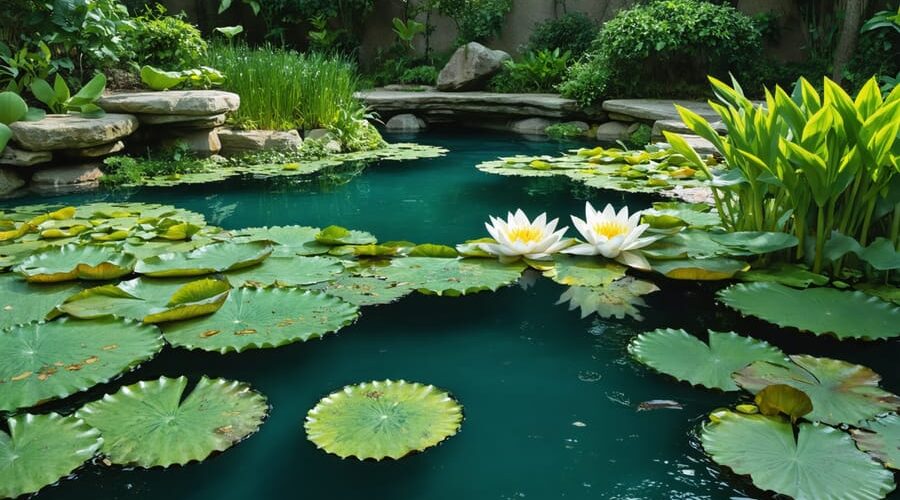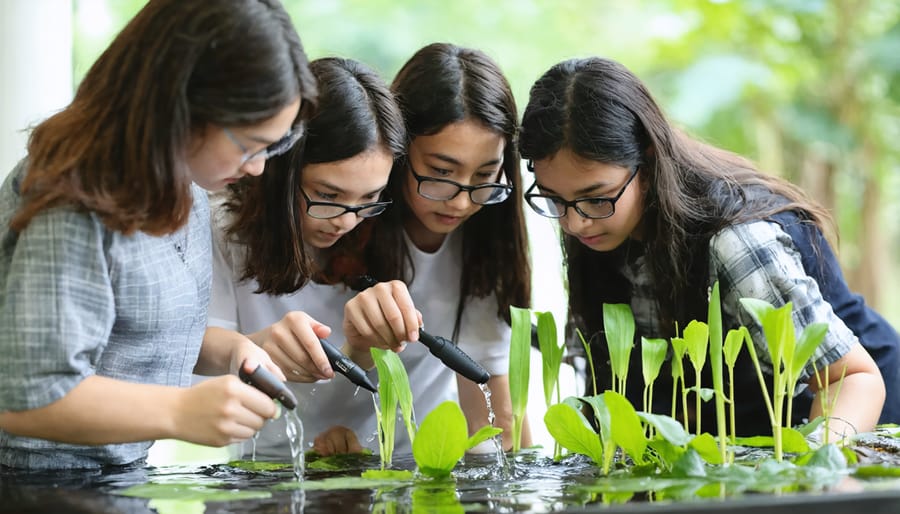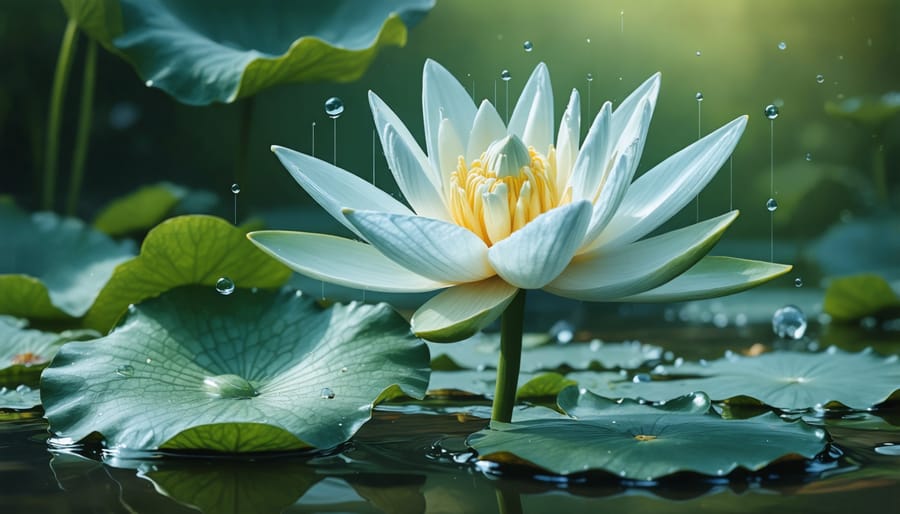
Master Water Garden Plants: From Mystery to Knowledge in One Workshop
Discover the hidden stories growing in your garden through expert-led plant identification classes – where every leaf, stem, and flower becomes a familiar friend. From distinguishing beneficial aquatic plants from invasive species to mastering the subtle differences between water lily varieties, these hands-on workshops transform casual gardeners into confident plant experts. Whether you’re a pond enthusiast looking to enhance your water garden or a nature lover eager to understand the diverse plant life around you, plant identification classes offer structured learning experiences that combine classroom knowledge with practical field experience. Join a growing community of plant enthusiasts who share your passion for understanding and nurturing the natural world, while developing skills that will serve you in both hobby and professional settings. These engaging sessions provide the perfect balance of scientific insight and practical application, ensuring you’ll never look at your garden the same way again.
Why Plant Identification Matters in Water Gardens
Safety and Compliance
When participating in plant identification classes, it’s crucial to understand and follow safety protocols, especially regarding invasive species. Always clean your boots, tools, and equipment before and after field sessions to prevent spreading unwanted plants between locations. Many regions have specific regulations about collecting and transporting plant specimens, so familiarize yourself with local laws before gathering samples.
Most reputable classes will cover proper handling techniques for potentially harmful plants and emphasize the importance of leaving no trace in natural environments. Some areas require permits for plant collection, even for educational purposes. Always verify whether your class provider has the necessary permissions and insurance coverage.
Remember to wear appropriate protective gear during field studies, including long sleeves, closed-toe shoes, and gloves when handling unknown plants. Stay updated on your region’s invasive species lists and reporting procedures, as this knowledge is essential for responsible plant identification practice.
Ecosystem Balance
Understanding plant selection is crucial for maintaining a healthy water garden ecosystem. The right mix of plants helps filter excess nutrients, preventing algae blooms and maintaining clear water. Native species are particularly valuable, as they’ve evolved alongside local wildlife, providing natural food sources and shelter for birds, butterflies, and beneficial insects.
In plant identification classes, you’ll learn how different species work together to create a balanced environment. Some plants, like water lilies, shade the pond and reduce water temperature, while others, such as rushes and sedges, act as natural filters. You’ll discover how to choose plants that not only look beautiful but also support local biodiversity.
The knowledge gained from these classes helps you avoid invasive species that can harm local ecosystems while selecting plants that contribute to your pond’s health and your area’s wildlife population.
What to Expect in a Plant ID Workshop

Hands-on Learning Components
The hands-on components of plant identification classes bring theory to life through engaging field activities. Students spend time identifying aquatic plants in natural settings, examining leaf patterns, flower structures, and growth habits up close. You’ll learn to use simple identification tools like magnifying glasses and field guides while practicing proper collection and documentation techniques.
Working in small groups, participants get to create their own plant portfolios, complete with photographs, pressed specimens, and detailed notes. Many classes include guided nature walks where instructors point out distinctive features of different species in their natural habitat. You’ll also gain hands-on experience with digital plant identification apps and online resources that can help you continue learning after the class.
The practical exercises often involve seasonal observations, helping you understand how plants change throughout the year. This hands-on approach builds confidence in your identification skills and creates lasting memories that reinforce your learning. Whether you’re examining floating plants or exploring marginal species, these interactive sessions make plant identification both fun and memorable.
Tools and Resources Provided
Most plant identification classes provide comprehensive materials to support your learning journey both during and after the course. You’ll typically receive a detailed plant identification guidebook featuring clear photographs, descriptions, and key identifying characteristics of common aquatic plants. Many courses include waterproof field notebooks and magnifying loupes, essential tools for close examination of plant features.
Digital resources often complement physical materials, with access to online plant databases, mobile apps for quick identification, and digital field guides you can reference on your smartphone. Some classes provide specimen collection kits, including small containers, labels, and preservation materials for creating your own reference collection.
Take-home materials usually feature laminated quick-reference cards highlighting common plant families and their characteristics. You’ll also receive detailed handouts covering specific topics like leaf patterns, flower structures, and seasonal growth cycles. Many instructors share curated resource lists featuring recommended books, websites, and local botanical gardens where you can continue your learning journey independently.
To ensure lasting value, most courses provide lifetime access to online course materials and updates, allowing you to refresh your knowledge whenever needed.

Essential Plant Categories Covered
Marginal Plants
Marginal plants are fascinating species that thrive in shallow water or moist soil around the edges of ponds and water features. These plants typically grow in water depths between 0-6 inches and play a crucial role in creating natural transitions between water and land. Popular varieties include iris, rushes, and cattails, which add vertical interest and seasonal color to your water garden.
During identification classes, you’ll learn to recognize key features like leaf shapes, flower structures, and growth patterns specific to marginal plants. You’ll discover how these plants serve multiple purposes – from providing shelter for wildlife to helping maintain water quality through natural filtration. The classes often include hands-on sessions where you can examine live specimens and practice identifying different species in their natural habitat. This knowledge is invaluable for creating balanced water gardens and maintaining healthy pond ecosystems.
Floating Plants
Floating aquatic plants add a magical touch to any water garden, and learning to identify them is both fun and rewarding. These plants come in two main categories: free-floating varieties like duckweed and water hyacinth that drift on the surface, and attached floaters such as water lilies that root in soil below. Free-floating plants are perfect for natural filtration and providing shade for fish, while attached floaters create stunning displays with their surface-reaching leaves and beautiful blooms. In our workshops, you’ll learn to spot key identifying features like leaf shapes, flower structures, and root systems that make each species unique. We’ll also cover common look-alikes and how to distinguish between beneficial floating plants and potentially invasive species that should be avoided in your water garden.
Submerged Plants
Submerged plants, also known as oxygenators, are fascinating aquatic species that grow completely underwater. These plants play a crucial role in maintaining pond health by producing oxygen and reducing algae growth. Popular varieties include Hornwort, Anacharis, and Cabomba, each with distinct leaf patterns and growth habits. During identification classes, you’ll learn to spot the unique characteristics of these plants, such as Hornwort’s needle-like leaves and Anacharis’s dense, whorled foliage. You’ll also discover how to recognize healthy specimens for your water garden and understand their specific care requirements. Hands-on sessions often include examining live samples under magnification, helping you notice subtle differences between similar species and ensuring successful cultivation in your own pond ecosystem.
Decorative Water Lilies and Lotuses
Water lilies and lotuses are the crown jewels of any water garden, transforming ponds into stunning displays of color and elegance. In identification classes, you’ll learn to distinguish between hardy and tropical water lilies by their leaf patterns and flower characteristics. Hardy varieties showcase rounded leaves with distinctive splits, while tropical species often feature serrated edges and more dramatic blooms. Lotus plants are easily recognized by their massive circular leaves that sit above the water’s surface and their spectacular flowers that can reach dinner-plate size. You’ll discover how to identify popular varieties like the Egyptian lotus and the American lotus, along with common ornamental hybrids. The classes typically include hands-on sessions where you’ll examine live specimens, learning to spot the subtle differences in petal arrangements, leaf structures, and growth patterns that make each species unique.

Finding the Right Workshop
When choosing a plant identification workshop, start with identifying your specific learning goals. Are you interested in native aquatic plants, ornamental varieties, or perhaps both? This will help narrow down your options and ensure you get the most value from your investment.
Look for workshops that offer hands-on experience with live specimens. The best classes combine classroom learning with practical sessions where you can examine plants up close, learning their unique characteristics and growth patterns. These interactive elements are crucial for developing real-world identification skills.
Consider the instructor’s expertise and teaching style. Experienced botanists or horticulturists with a background in aquatic plants are ideal, but they should also be able to communicate complex information in an accessible way. Don’t hesitate to ask about their experience with water gardens specifically.
Workshop size matters too. Smaller groups (usually 8-12 participants) allow for more individual attention and questions. This is particularly important when learning identification techniques that require close observation and practice.
Check the workshop duration and schedule. While single-day courses can provide a good introduction, multi-session workshops often offer more comprehensive learning opportunities. They also allow you to observe plants through different growth stages, which is valuable for identification purposes.
Location and timing are practical considerations too. Choose a workshop that’s conveniently located and fits your schedule. Some venues offer both weekend and evening classes to accommodate different schedules.
Finally, review the workshop materials and resources provided. Quality handouts, field guides, or digital resources can enhance your learning experience and serve as valuable references long after the class ends.
Attending plant identification workshops can be a transformative experience for any water garden enthusiast. Not only will you gain confidence in identifying various aquatic plants, but you’ll also develop a deeper appreciation for the intricate world of water gardening. These classes provide invaluable hands-on experience, networking opportunities with fellow enthusiasts, and expert guidance that simply can’t be replicated through online research alone.
The skills you’ll acquire will help you make better plant choices for your water garden, identify potential invasive species, and maintain a healthier ecosystem. Many participants find that these workshops lead to long-lasting connections with other gardeners and often open doors to community projects and local gardening initiatives.
Ready to start your plant identification journey? Begin by reaching out to your local botanical gardens, nature centers, or horticultural societies to inquire about upcoming workshops. Consider joining online gardening communities where members often share information about classes and events. Remember, every expert gardener started as a beginner, and taking that first step toward formal education in plant identification could be the beginning of an exciting new chapter in your water gardening adventure.
